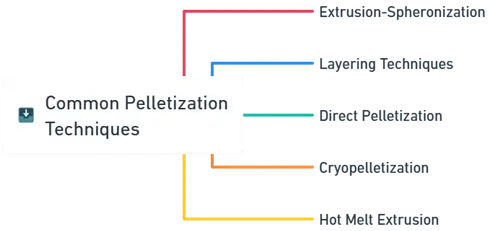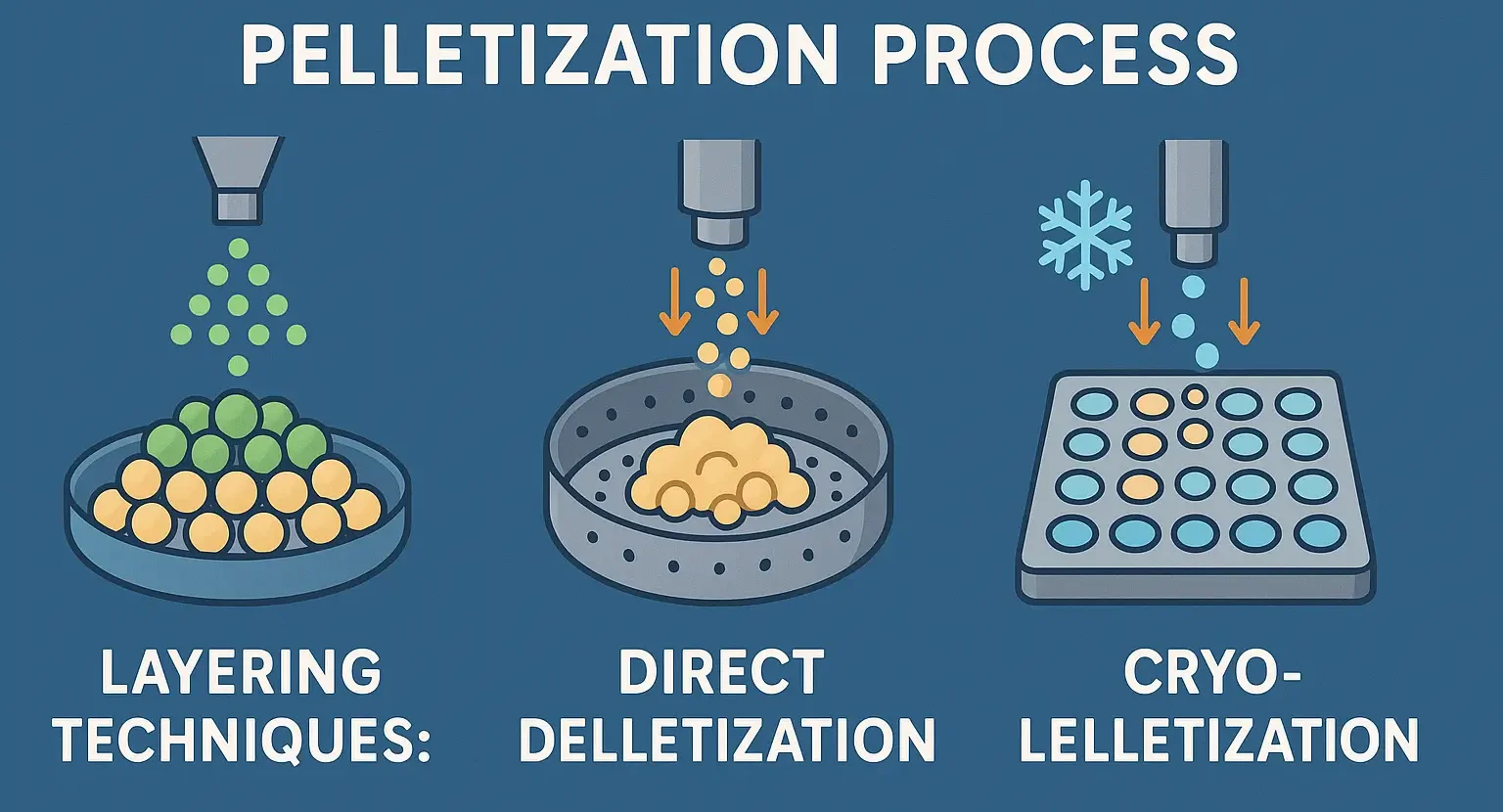- Pelletization is the process of converting fine powders or granules into small, free-flowing, spherical units.
- Pelletization Process can be achieved through various techniques:
Common Pelletization Techniques:

-
Extrusion-Spheronization:
- The most widely used method for producing pellets.
-
Steps:
- Mixing and Wet Massing: The drug and excipients are blended, and a binder solution is added to form a wet mass.
- Extrusion: The wet mass is passed through an extruder to form cylindrical extrudates.
- Spheronization: The extrudates are broken into smaller units and rounded into spherical pellets in a spheronizer.
- Drying: The pellets are dried to reduce moisture content.
-
Layering Techniques:
- Used to apply layers of drug or excipients onto an inert core.
-
Types:
- Solution/Suspension Layering: A solution or suspension of the drug is sprayed onto the cores while rotating in a pan or fluidized bed.
- Powder Layering: Dry powder is layered onto cores, followed by binder spraying.
-
Direct Pelletization:
- Involves forming pellets directly from powders in high-shear granulators or fluidized bed processors without the extrusion step.
- Often requires specialized excipients like MCC.
-
Cryopelletization:
- Used for temperature-sensitive drugs.
- The liquid formulation is dropped into liquid nitrogen, forming frozen pellets.
-
Hot Melt Extrusion:
- Suitable for drugs with poor water solubility.
- The drug and polymer are melted and extruded to form pellets.
Click Here to Watch the Best Pharma Videos

